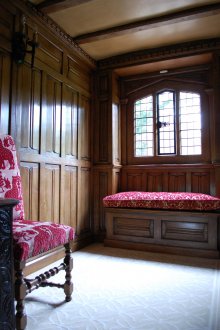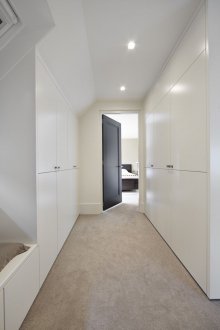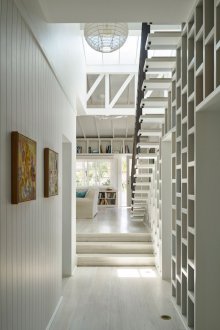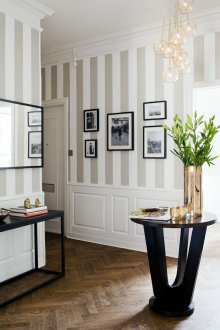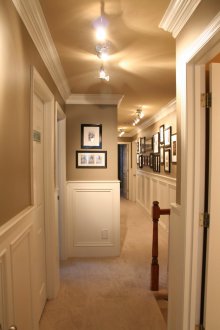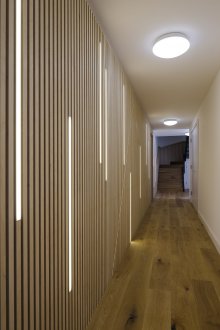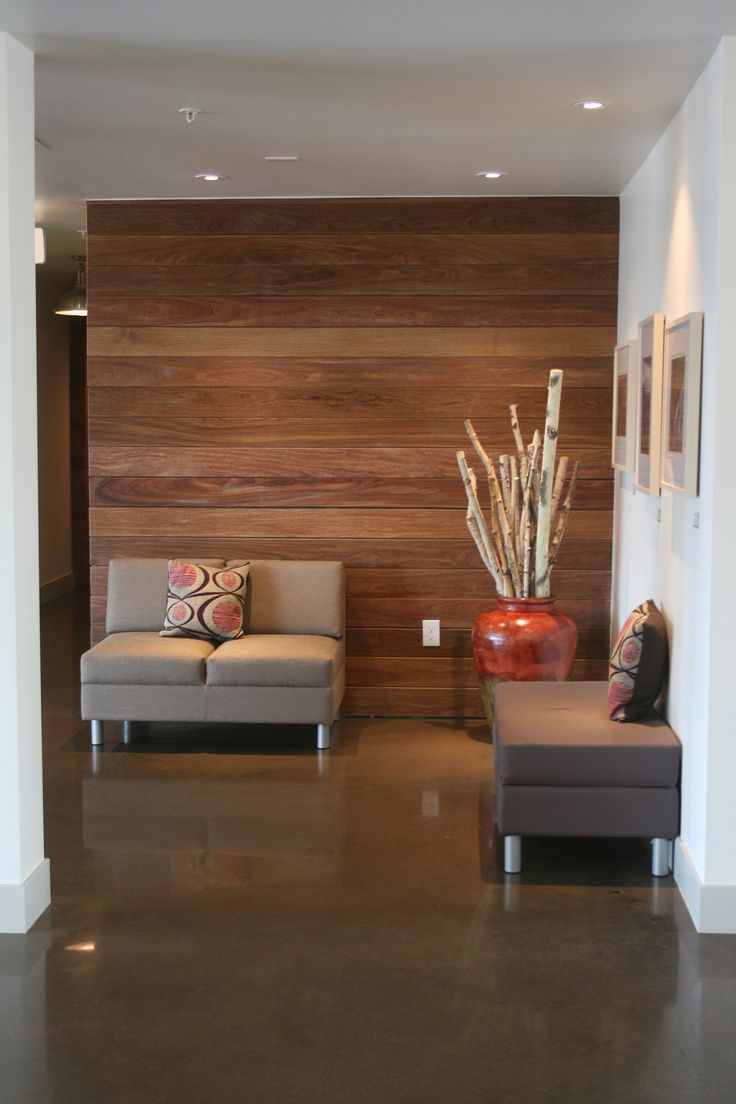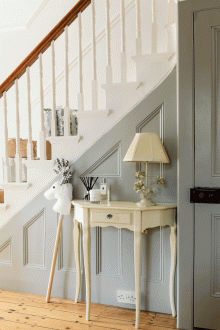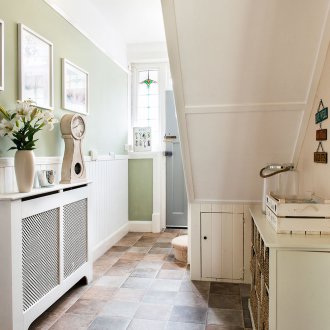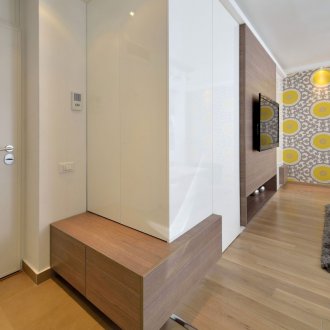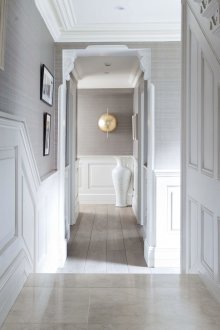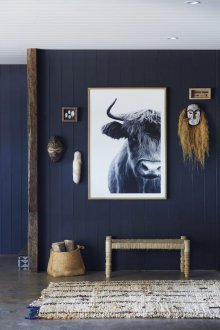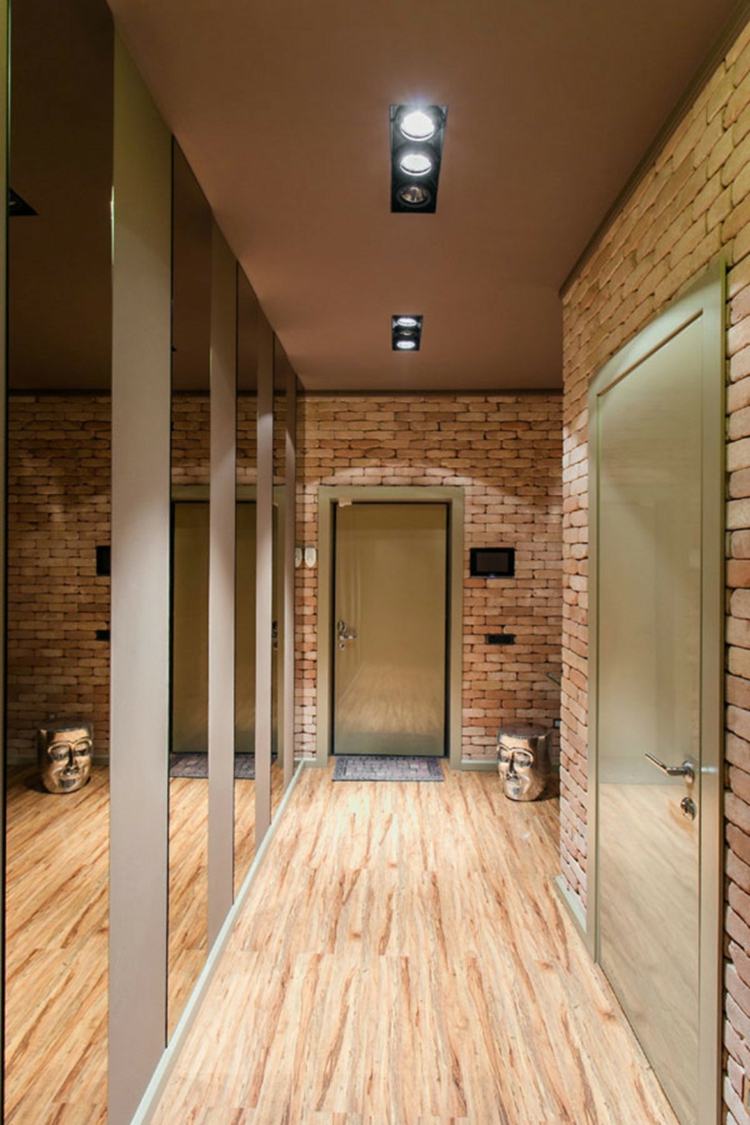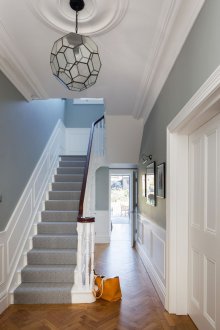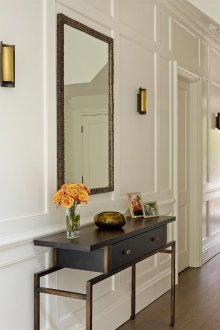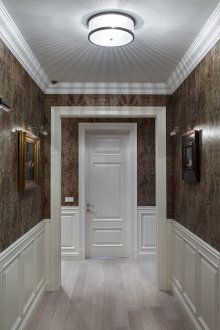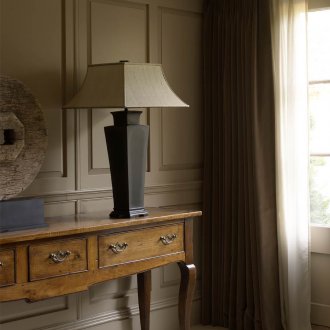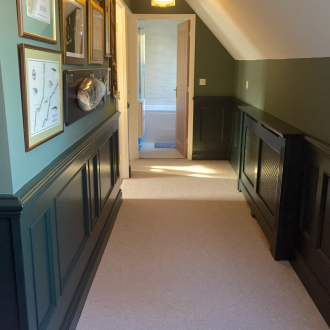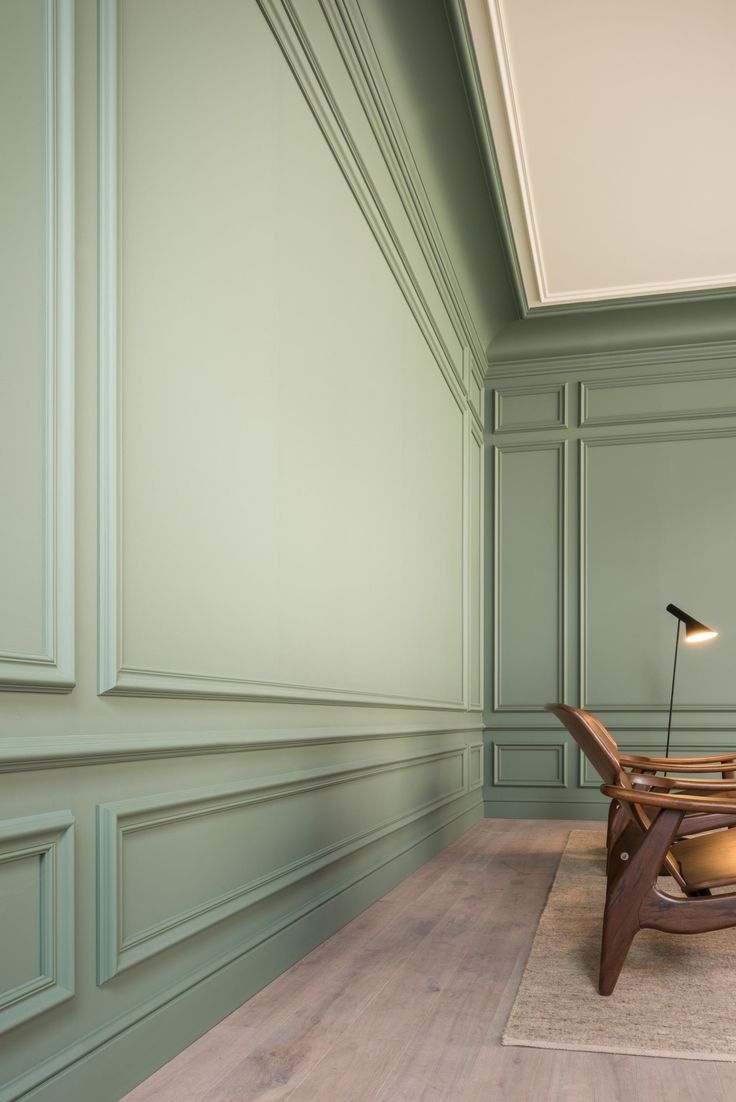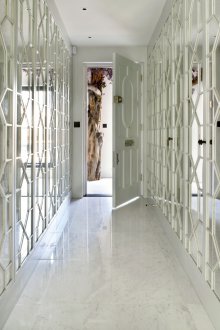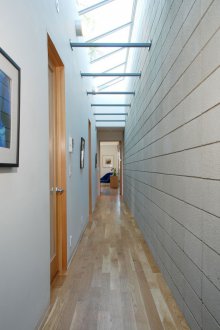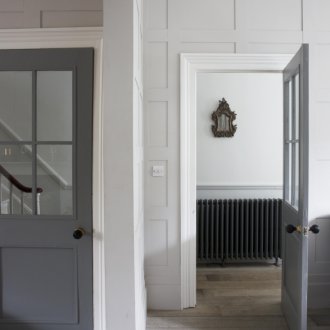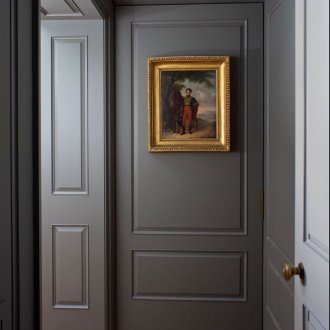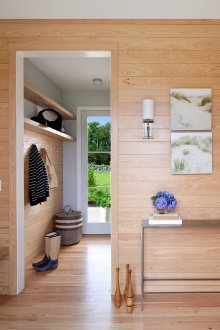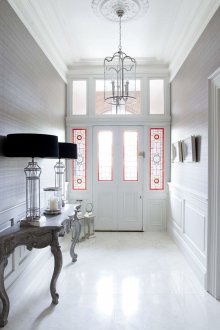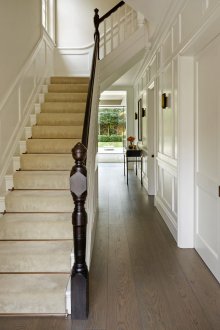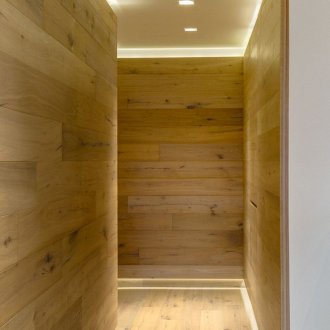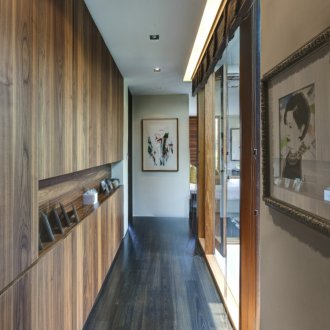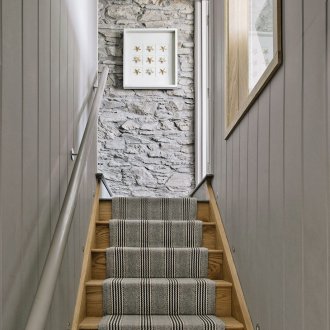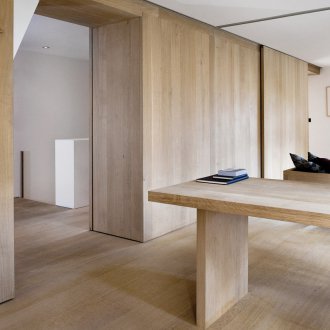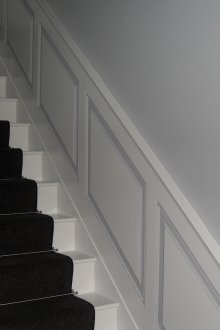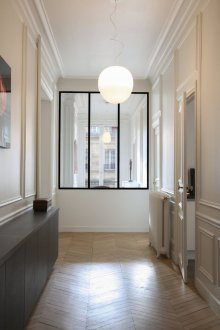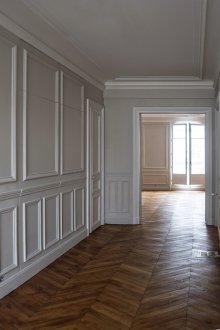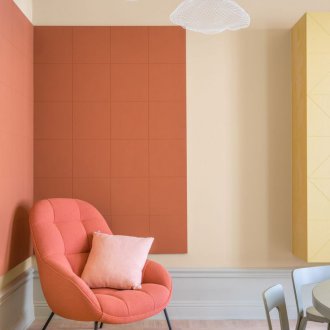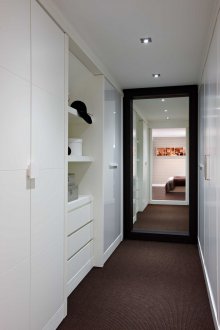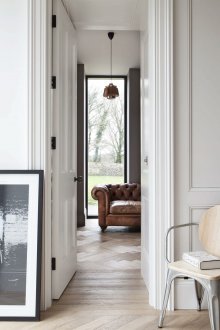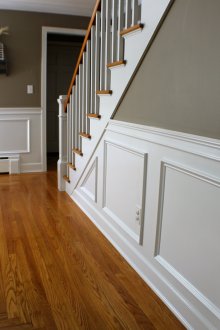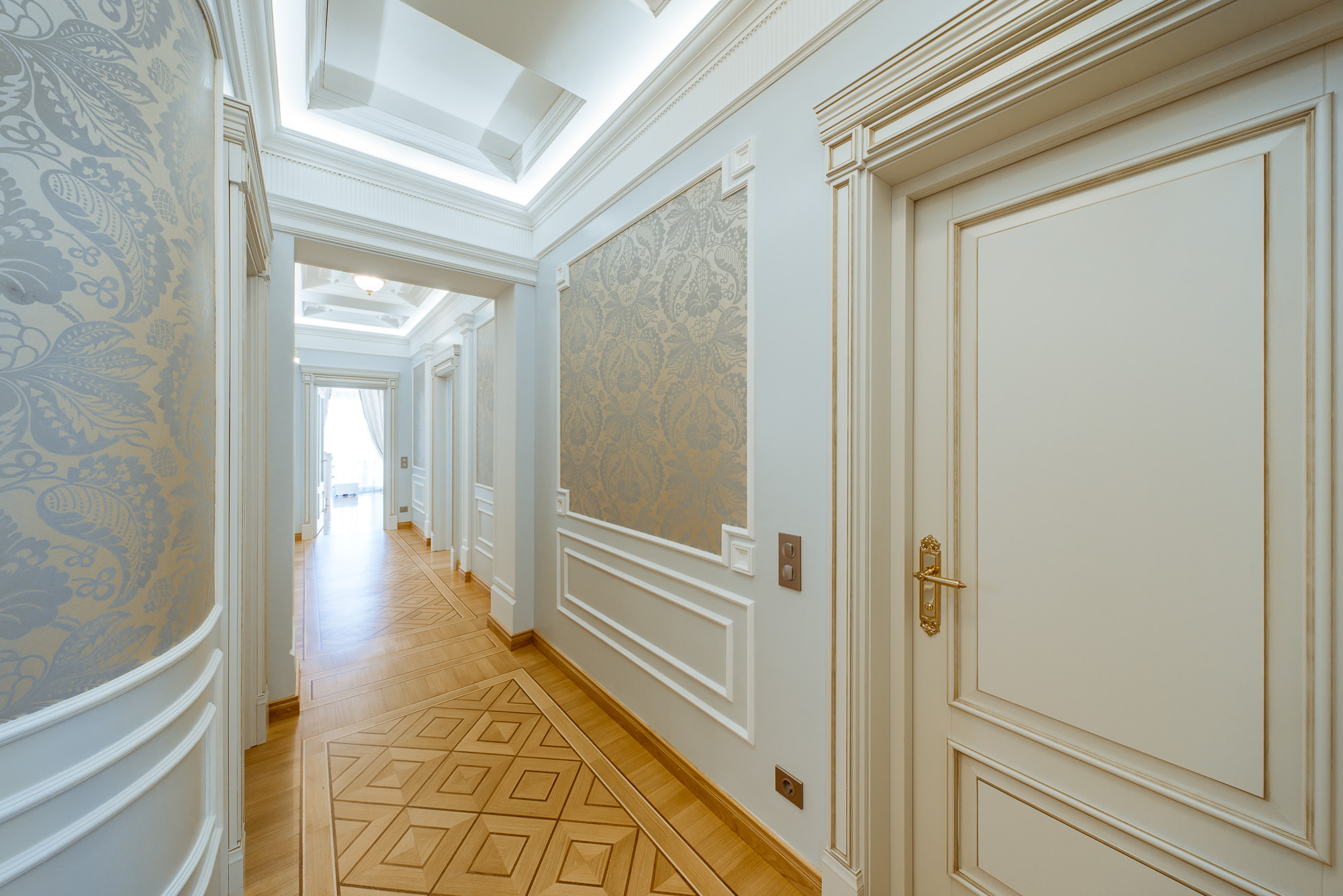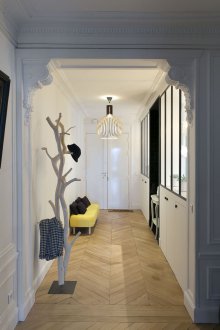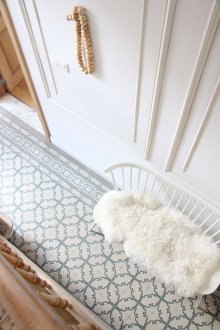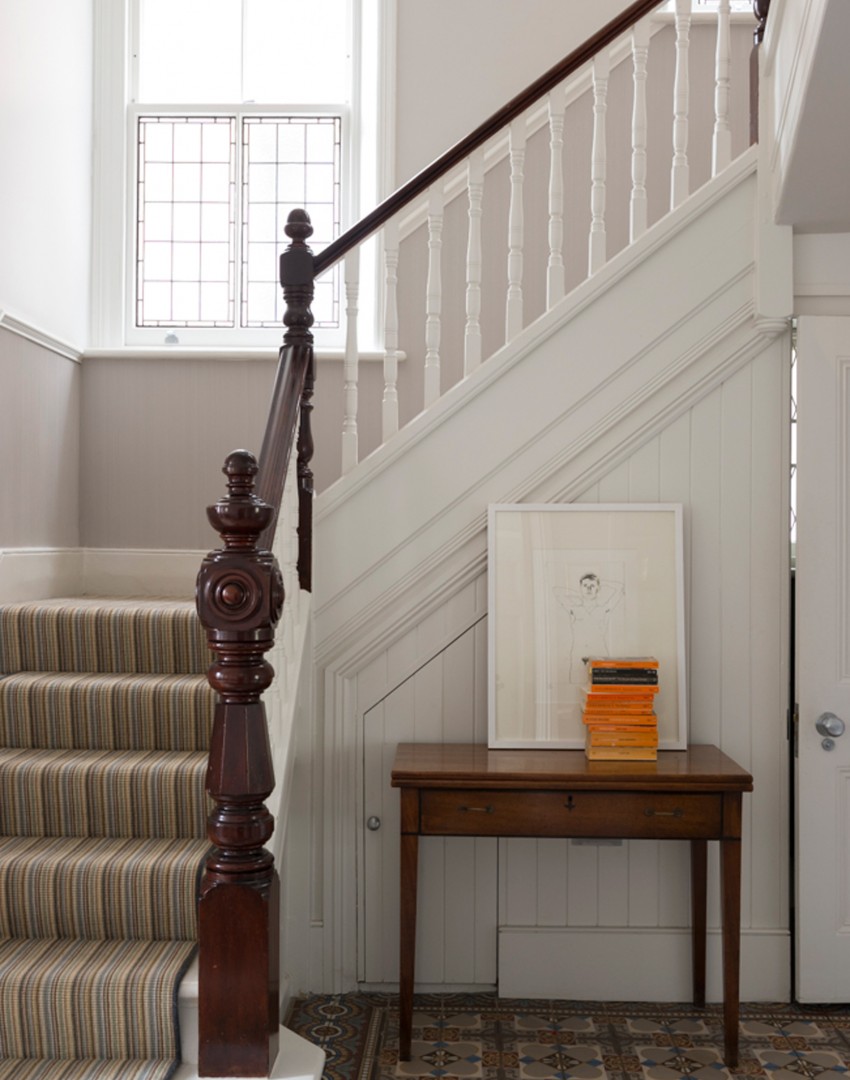Paneling the corridor (56 photos)
Content
One of the most common ways to design a hallway is to trim it with panels. Moreover, this is one of the most budget options and at the same time beautiful, due to the possibility of their use as a decor. Well, you can directly use it in absolutely any hallway, in combination with the desired stylization. What is a definite plus for all lovers of sophisticated interiors and decoration.
The process of repairing the hallway is not a difficult task in itself. After all, its main goal is to create a good, harmonious interior, which should easily be combined with the rest of the premises of your apartment. And just through the use of various panels, in the process of decorating the hallway, it becomes very simple to achieve full stylization, even if we are talking about MDF or fiberboard panels.
How to start repairing the corridor
Often, the process of repairing and creating an interior, of a room, pursues not only the goal of changing the environment, by using decoration decor and a kind of interior, but also by spending a certain time. It is for this reason that many of us do all the repairs ourselves. And this requires not only desire, but also certain knowledge.
First of all, you need to decide on all stages of the repair. Indeed, thanks to good planning, you can not only save your own time, but also create a first understanding of the entire future process. And this, in turn, is the most fundamental factor on the path to success. The entire repair process can be divided into three main components:
- Panel selection.
- Preparing for installation.
- Panel fastening.
Each of these points has its own characteristics, due to which it is possible not only to simplify the process of repairing the hall itself, but also to make its result more durable. A well-chosen panel will look great, like the decor of the room. In addition, with the proper approach, you can easily create the desired interior in the hallway. And due to the proper design and decoration to add sophistication and create a special atmosphere of the room.
Panel Selection
The first, and perhaps the most basic point in the process of repairing the hallway and creating the interior will be the choice of the panels themselves. There are quite a number of possible options for basement siding of the hallway walls, the most basic of which we will consider today. The main thing is to take into account all the features of the room and the possible future stylization of the hallway, by using panels as a decor.
One of the most common options is the use of plastic panels in the basement siding of the hallway walls. Due to its physical properties, the main advantage is the ability to decorate a room with high humidity. That is, for the corridor this option is one of the most optimal if we are aimed, first of all, at the durability of the created interior. The plastic surface is easy to clean and is quite resistant to sunlight. And thanks to the artificiality of the material, there is a very large selection of both models and color solutions, which allows them to be used as decor. However, it is worth noting one very serious minus - because of the artificial origin, such material is not recommended for use in large quantities in residential premises.
An equally popular option for decorating the corridor is the use of MDF panels. In part, it is a natural wood material. Thanks to this and their thickness, they seriously increase the level of sound insulation and thermal insulation. Moreover, MDF panels can be found with moisture resistant or refractory impregnation, which makes them just as priority when choosing materials for decorating the corridor. And thanks to its wood styling, MDF panels are becoming one of the most common options with a complete stylization of the room.
Well suited for decorating the corridor and fiberboard panel. Due to their environmental friendliness, they are most often used in apartments where young children are present. Due to their properties, fiberboard panels are easy to clean and are not afraid of moisture. And for the set of their stylization under the tree are one of the most budgetary options for creating a specific wooden interior.
Lovers of natural wood can easily find the corresponding panels. However, such options are far from the most budgetary, but they perfectly fulfill the role of decoration. Classical wooden panels are impregnated with special preparations that increase moisture resistance and fire resistance. Moreover, unlike MDF or fiberboard, a classic tree looks more noble and has increased reliability.
Preparing for installation.
The next step in the process of repairing and creating the interior will be the preparation of the walls for the installation of the panels themselves, i.e. directly siding. First of all, it is necessary to create a wall crate on which we will directly attach the panels. If we fasten the panels vertically, then the crate should be horizontal. And vice versa, if the panels are mounted horizontally, then we create the crate vertically.
The size of the crate itself is usually 20 by 40 mm. The upper and lower beam of the battens should be fixed at a distance of 3-4 cm from the floor and ceiling. The remaining bars are located at a distance of 50 cm from each other.
You can do without a crate. But it is necessary to use not only high-quality fasteners, but also fairly lightweight panels, for example, MDF or fiberboard. Yes, and they can only be attached if your wall is perfectly straight.
Panel Mount
There are several ways to fix panels. In many ways, they depend on the panels themselves, because each type has its own properties that must be taken into account. After all, the main purpose of repair is not only creating a new environment, but also giving it longevity.
One of the most popular solutions is to fasten the panels to the crate, using self-tapping screws. It is reliable and simple in execution. Yes, that's just it can not be used in all cases. If the room is wet, and this often happens in the corridors, then the self-tapping screw will not allow the wooden panels to expand, which will adversely affect. So this method is best used in dry rooms without sudden changes in humidity and temperature.
An equally popular method is the use of kleimers for fixing basement siding panels. Due to their physical properties and other technology, they no less firmly hold the panels on the crate and do not interfere with their compression or expansion under the influence of humidity and temperatures. Apply this method not only with classic wood panels, but also with panels of MDF or fiberboard.
But on the adhesive panels are attached only to the wall. For gluing to the crate is a very unreliable method. Moreover, the glue itself must be sufficiently elastic and, as in previous cases, should not interfere with the thermal expansion of the panels, whether it be MDF, fiberboard or classic wood.
